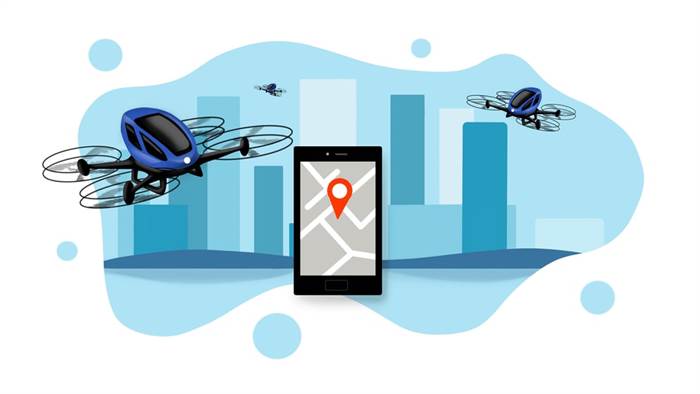Datarobot Ai Platform For Manufacturing Ai In Manufacturing
Manufacturing is likely certainly one of the highest-risk industrial sectors to be working in with more than 3,000 main accidents and nine fatalities occurring every year. The involvement of robots in high-risk jobs can help manufacturers scale back undesirable accidents. The COVID-19 pandemic additionally increased the curiosity of manufacturers in AI functions. As seen on Google Trends graph below, the panic as a end result of lockdowns may have forced producers to shift their focus to synthetic intelligence. Implementing AI in manufacturing amenities is getting well-liked among manufacturers.

Industrial robots have been a staple within the manufacturing industry for a while. However, integrating AI into automated robots represents a big advancement in manufacturing expertise. Unlike traditional industrial robots programmed with fastened directions, AI-powered robots can learn from their setting, adapt to changing situations, and make selections autonomously. Intelligent automation is the mixture of clever software program and robotic tools. It uses AI’s advantages to automate duties that transcend repetition by combining AI, industrial robots, or robotic course of automation. AI is increasingly carried out in demand forecasting to enhance accuracy and reliability.
Manufacturing plants, railroads and different heavy gear customers are increasingly turning to AI-based predictive upkeep (PdM) to anticipate servicing needs. While autonomous robots are programmed to repeatedly carry out one particular task, cobots are capable of learning numerous duties. They can also detect and keep away from obstacles, and this agility and spatial consciousness permits them to work alongside — and with — human staff. To reap the advantages of ai in manufacturing, it is essential to incorporate AI as soon as attainable. However, doing so demands a substantial funding of time, effort, and assets, as properly as the upskilling of your workforce. Finishing pilot initiatives to be scaled up quickly and out of the pilot phase is essential.
Manufacturing Ai: 15 Tools & Thirteen Use Circumstances / Applications In ’24
“Depending on the material out there, generative AI fashions are skilled with different amounts of actual data,” says Beggel, whose work focuses on the event and utility of generative AI. “For instance, you’ll have the ability to take pictures of a comparable product as a foundation and apply them to the current use case. We use what exists to create one thing new.” The technical time period for that is domain switch.
- AI-powered software like can predict materials prices more accurately than people and it learns from its mistakes.
- The sensible conception of AI in manufacturing appears extra like a collection of functions for compact, discrete techniques that handle particular manufacturing processes.
- Scaling an AI resolution might require standardizing processes or information codecs to ensure the AI capabilities consistently.
- However, highly effective AIs can then generate their own pictures and models simulating different situations and situations.
- Manufacturers usually direct cobots to work on tasks that require heavy lifting or on manufacturing unit meeting lines.
(All components have defects; that’s why they fail.) AI is important for the applying of a digital twin in manufacturing process design and upkeep. In truth, BMW Group already uses AI to judge part photographs from its manufacturing line, spotting deviations from high quality standards in real-time. In the final inspection space at the BMW Group’s Dingolfing plant, an AI software compares the car order information with a stay picture of the model designation of the newly produced car.
Since then, the automobile manufacturer has continued to innovate in vehicle production. Collaborative robots, additionally known as cobots or co-robots, are robots that work alongside workers in a manufacturing facility to finish a task that can’t be absolutely automated (and carried out by an automated robot). Now that you’re conversant in the underlying technologies, let’s look at how AI solutions are implemented and the way they enhance efficiency and innovation within the manufacturing sector. The effectivity positive aspects from AI integration translate into value and time savings, permitting resources to be redirected to extra crucial tasks and opportunities. Nvidia is using AI to optimize the location of intricate transistor configurations on silicon substrates, which not only saves time however offers larger control over value and pace.
Here’s What Learners Are Saying Regarding Our Packages:
Making the most of it means building trust in AI methods and ensuring regulatory compliance. Automation is creating new ranges of speed and accuracy in industrial environments. Predictive upkeep and prognostics minimize downtime and maximize the life of equipment.
AI is assisting within the design of products, however fabrication continues to be in the early phases of AI adoption. Automated shop tooling is in the news, but most of the world’s factories continue to depend on older gear, usually with only a mechanical or restricted digital interface. The practical conception of AI in manufacturing appears more like a collection of applications for compact, discrete methods that handle specific manufacturing processes.

AI-powered software like can predict materials costs more accurately than people and it learns from its errors. DataRobot lets you nest AI models to beat multimodal provide chain complexity. With DataRobot, you can also mitigate dangers and ensure model accuracy as economic conditions change via superior monitoring capabilities. AI might help improve provide chain activities, corresponding to optimizing stock levels, and figuring out potential provider issues.
Manufacturing Ai Market Overview
For example, regulation might require that critical choices be made by humans somewhat than machines. Or that cash spent on AI infrastructure comes with a finances for training people to work with AI-powered gadgets and methods (upskilling) or to transition into jobs that can’t be stuffed by emerging technology (reskilling). Artificial intelligence is already getting used throughout the manufacturing trade to recognize potential workplace hazards, automate component ordering, and information employees. Industrial artificial intelligence is also used to assist analyze information and convey it in actionable documents and communications.These current use instances aren’t going anywhere. However, advances in AI are introducing emerging use cases and making present ones even more efficient. Learn tips on how to create an end-to-end hardware-accelerated industrial inspection pipeline to automate defect detection.

They will operate kind of autonomously and respond to external events in more and more clever and even humanlike ways—events ranging from a tool sporting out, a system outage, or a hearth or natural catastrophe. The explosive growth of the electronics items market means that there’s little room for error or time to waste when embracing AI in manufacturing. Customer necessities for delivering on-time and on-budget product are of the utmost importance, and efficiency is a objective in every thing manufacturing and supply chain management. A digital twin can be used to observe and analyze the manufacturing process to determine where quality points could happen or where the performance of the product is decrease than supposed.
Reinventing Maintenance Operations With Cuopt And Jetson Orin
The machines can detect a software wearing out or one thing unexpected—maybe even one thing expected to happen—and they’ll react and work round the problem. Our governing precept in driving Industry four.0 or sensible manufacturing unit initiatives is that, “If we are able to digitalize it, then we will visualize it.” After we can visualize it, we are able to optimize it. A McKinsey evaluation tasks a significant gap between corporations that adopt and absorb artificial intelligence within the first 5 to seven years and those that follow or lag. The analysis suggests that AI adoption “front-runners” can anticipate a cumulative 122% cash-flow change, whereas “followers” will see a considerably decrease influence of only 10% cash-flow change. Learn concerning the AI and high-performance computing (HPC) hardware, software program, and networking solutions for manufacturing. Explore the five steps you should take to get started with digital twins and get insight into successful digital twin initiatives.
“The camera captures all sections of the stator in 2D and 3D,” says Timo Schwarz, an engineer on Riemer’s project staff and an skilled in picture processing. The AI learns the traits and features of fine and defective parts on the premise of real and artificially generated images. When offered with new photos, the AI applies its information and decides within a fraction of a second whether or not an element is defective. If there may be certainly a fault, the half routinely returns to the production process and is reworked.
It proved its effectivity by optimizing a design featuring 2.7 million cells and 320 macros in just three hours. Learn how corporations are designing and making a better world through innovation; keep up with accelerating technological advancements; and uncover insights concerning the drivers of change impacting your industry. He is an element of the Autodesk Industry Futures team and leads the R&D effort for this group. Harris has a background in aerospace, automotive, and supplies science with 15 years of experience on this space.
It improves defect detection by utilizing complex image processing methods to categorise flaws throughout a wide range of business objects automatically. AI-powered imaginative and prescient systems can examine merchandise with far larger accuracy and velocity than human inspectors, who’re more susceptible to making errors (and overlooking them). This info provides upkeep teams predictive insights to schedule maintenance interventions proactively before gear failure occurs.

In addition to their common duties, operators on this system at the moment are answerable for troubleshooting and testing the system. Production losses because of overstocking or understocking are persistent issues. Businesses may gain gross sales, money, and patronage when merchandise are appropriately stocked. A recent https://www.globalcloudteam.com/ai-in-manufacturing-transforming-the-industry/ survey performed by Augury of 500 corporations reveals that 63% plan to spice up AI spending in manufacturing. This aligns with AI in manufacturing market projection, which is estimated to achieve $20.8 billion by 2028, in accordance with MarketsandMarkets.
As laptop know-how progresses to be more able to doing things people have historically carried out for themselves, AI has been a pure growth. It doesn’t necessarily replace individuals; the ideal functions assist individuals do what they’re uniquely good at—in manufacturing, that might be making a part within the manufacturing unit or designing a product or part. AI is essential to the idea of “Industry 4.zero,” the trend toward greater automation in manufacturing settings, and the large era and transmission of information in manufacturing settings. AI and ML are essential ways to ensure that organizations can unlock the value in the monumental amounts of information created by manufacturing machines.
Synthetic Intelligence In Logistics
Facility structure is driven by many elements, from operator safety to the efficiency of course of circulate. It could require that the ability is reconfigurable to accommodate a succession of short-run initiatives or frequently changing processes. Newer fabrication systems have screens—human-computer interfaces and electronic sensors to provide feedback on uncooked materials provide, system standing, power consumption, and many other components. People can visualize what they’re doing, either on a pc screen or on the machine.
By utilizing a process mining tool, producers can compare the efficiency of various areas down to individual course of steps, together with length, price, and the particular person performing the step. These insights help streamline processes and establish bottlenecks in order that manufacturers can take motion. Robotics, in addition to additive manufacturing—better generally known as 3D printing—impact the industry in powerful methods, too.

